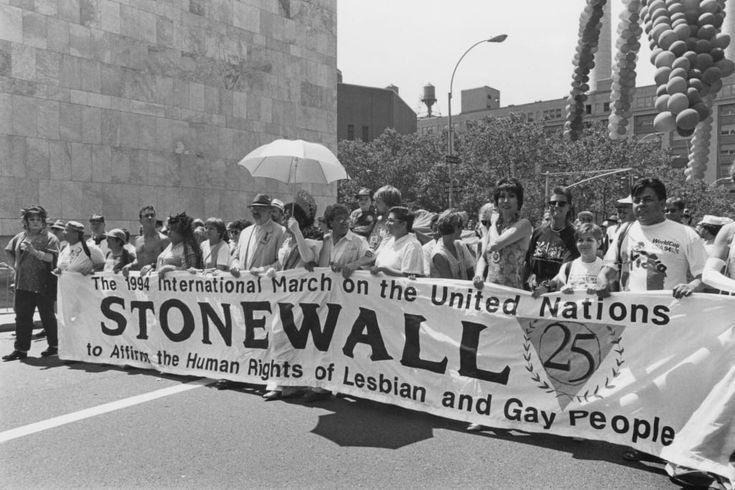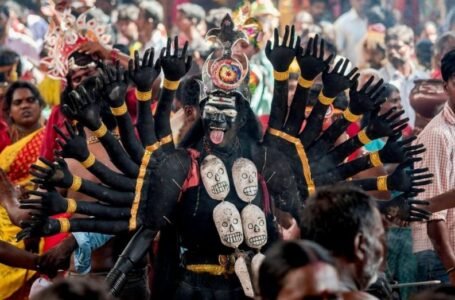The Stonewall Riots: A Turning Point in LGBTQ+ History

The Stonewall Riots, which took place in New York City’s Greenwich Village in June 1969, are widely regarded as the catalyst for the modern LGBTQ+ rights movement. These spontaneous protests against police harassment at the Stonewall Inn marked a shift in the fight for LGBTQ+ equality, setting the stage for increased activism, community organisation, and the first Pride March in 1970. The riots are a crucial chapter in the history of civil rights, demonstrating the power of resistance against institutional oppression.
- 1. The Historical Context: LGBTQ+ Oppression in the 1960s
Before the Stonewall Riots, LGBTQ+ individuals in the United States faced severe legal, social, and cultural discrimination. During the mid-20th century, homosexuality was criminalised, and LGBTQ+ people were often targeted by law enforcement.
Laws at the time made same-sex relationships illegal, and engaging in homosexual acts could lead to arrest, imprisonment, or forced psychiatric treatment. LGBTQ+ individuals were also routinely fired from jobs if their sexual orientation was discovered. The government played an active role in this persecution, particularly during the Lavender Scare, when suspected LGBTQ+ employees were dismissed from federal jobs.
In addition to legal discrimination, medical authorities classified homosexuality as a mental illness, and LGBTQ+ people were often subjected to conversion therapy, chemical castration, or institutionalisation. Society as a whole viewed LGBTQ+ individuals as outsiders, and they had very few spaces where they could gather without fear of being arrested or publicly humiliated. This inadvertently helped gay establishments thrive as underground bars proliferated. However, police raids persisted, shutting down venues like Eve’s Hangout in 1926. In the 1950s and 1960s, repression intensified, with Mayor Wagner targeting gay bars ahead of the 1964 World’s Fair. Undercover officers entrapped gay men, and the New York State Liquor Authority restricted bar licenses. The Mattachine Society successfully campaigned against police entrapment and held a “sip-in” protest in 1966 to challenge discrimination in bars.
. The Stonewall Inn, located on Christopher Street in Greenwich Village, was a well-known gathering spot for LGBTQ+ people, particularly drag queens, transgender people, and homeless youth. Though the bar was owned by the Mafia, which paid off the police to keep it open, it was still subject to frequent raids and harassment.
Despite this oppression, LGBTQ+ activism was slowly growing in the 1960s, with organisations like the Mattachine Society and the Daughters of Bilitis advocating for equal rights. However, most activism at the time focused on assimilation—convincing mainstream society that LGBTQ+ people were no different from heterosexual individuals. The Stonewall Riots would mark a dramatic shift toward a more radical and confrontational approach to activism.
- The Night of June 28, 1969: The Spark of Resistance
In the early hours of June 28, 1969, officers from the New York City Public Morals Squad raided the Stonewall Inn. At the time, police raids on gay bars were common, but they usually followed a predictable pattern—patrons would be forced to show identification, some would be arrested, and the rest would disperse quietly.
However, this night was different. Instead of leaving in fear, the patrons inside the bar refused to go quietly. Outside, a growing crowd of onlookers watched as police began forcefully arresting people. Tensions escalated when a lesbian woman, believed to be Stormé DeLarverie, was beaten by officers and thrown into a police car. Witnesses recalled that she shouted to the crowd, “Why don’t you guys do something?” This was the turning point—within moments, the crowd erupted into protests and resistance.
The confrontation quickly turned into a riot. Protesters threw coins, bottles, and debris at the police, who soon realised they were outnumbered. As the violence escalated, police officers barricaded themselves inside the Stonewall Inn, and some protesters attempted to set the building on fire. The riot continued throughout the night, and though police reinforcements eventually arrived, the protests did not end.
Over the next several days, thousands of people gathered outside Stonewall to protest police brutality and demand equal rights. The Tactical Police Force (TPF) was brought in to control the crowds, but protesters continued to fight back, chanting slogans and refusing to disperse. The spontaneous nature of the uprising made it clear that the LGBTQ+ community was no longer willing to be silent in the face of oppression.
- The Aftermath: Birth of a Movement
The Stonewall Riots were not organised protests, but they sparked a new era of LGBTQ+ activism. For many, it was a turning point, proving that resistance was possible.
In the months following the riots, LGBTQ+ activists formed new organisations to channel the energy of the uprising into political action. The Gay Liberation Front (GLF) was one of the first groups to emerge, advocating for radical change and direct confrontation with oppression. Another group, the Gay Activists Alliance (GAA), focused on legal and political reforms.
A major shift also took place in the way LGBTQ+ activism was conducted. Before Stonewall, many groups had attempted to blend in with mainstream society, avoiding public demonstrations and emphasising respectability. After Stonewall, however, activists embraced a militant and unapologetic approach.
One of the most significant outcomes of the riots was the creation of the first-ever Pride March. On June 28, 1970, exactly one year after the riots, thousands of LGBTQ+ individuals marched from Stonewall to Central Park in what became known as the Christopher Street Liberation Day March. This event marked the beginning of the modern Pride movement, and today, Pride celebrations take place worldwide every June in honour of Stonewall.
- The Long-Term Legacy of Stonewall
The Stonewall Riots are widely regarded as the beginning of the modern LGBTQ+ rights movement. The impact of the uprising can still be felt today in legal advancements, cultural representation, and political activism.
Following the riots, LGBTQ+ activists pushed for the decriminalisation of homosexuality, and in 2003, the U.S. Supreme Court ruled in Lawrence v. Texas that anti-sodomy laws were unconstitutional. The fight for marriage equality, which began in the 1970s, culminated in Obergefell v. Hodges (2015), when the Supreme Court legalised same-sex marriage nationwide.
Cultural representation of LGBTQ+ people also expanded after Stonewall. While mainstream media had previously portrayed LGBTQ+ individuals as deviant or mentally ill, activists demanded more accurate and positive representation. Today, LGBTQ+ visibility in film, television, and literature has increased dramatically, reflecting the ongoing influence of the movement.
In 2016, President Barack Obama designated the Stonewall Inn as a National Monument, making it the first U.S. landmark dedicated to LGBTQ+ history. This recognition ensured that Stonewall would be preserved as a symbol of resistance and progress for future generations.
Despite these advancements, challenges remain. LGBTQ+ individuals still face discrimination in employment, healthcare, and housing, and hate crimes against LGBTQ+ people continue to occur. Many activists emphasize that the spirit of Stonewall must continue, as the fight for full equality is far from over.
- Conclusion:
The Stonewall Riots were not the beginning of LGBTQ+ activism, but they marked a significant shift in its trajectory. The riots transformed the fight for LGBTQ+ rights from small, isolated efforts into a global movement demanding equal rights and visibility.
Each year, Pride Month is celebrated in June to honor Stonewall and the activists who risked their lives for future generations. The spirit of resistance that ignited on Christopher Street in 1969 continues to inspire movements for justice and equality worldwide.


